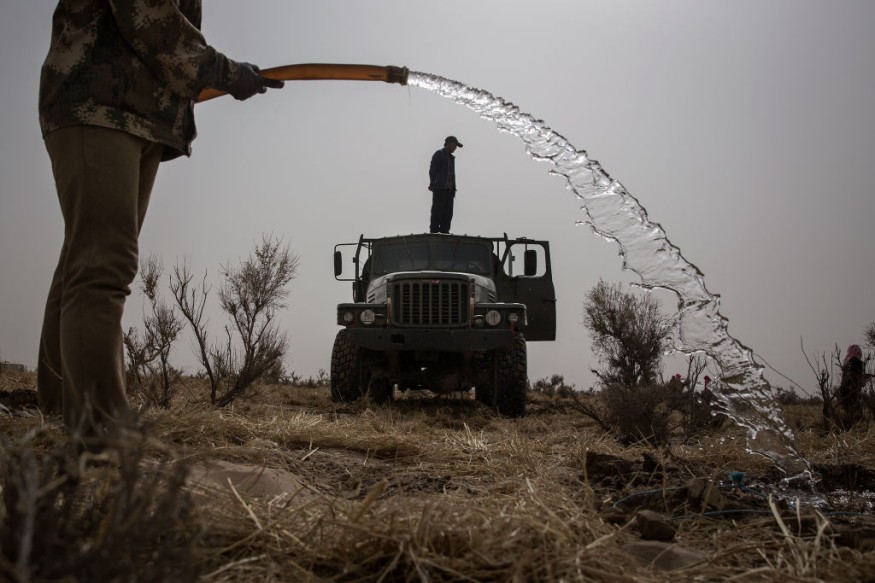New research investigates present and future water requirements for worldwide agriculture and forecasts whether the water levels available, either from irrigation or rainwater, will be adequate to meet those necessities under climate change.
A report from the EurekAlert! specified that agricultural water scarcity is anticipated to rise in more than 80 percent of the world's croplands by 2050.
To reach their findings, the researchers developed a new index to gauge and predict the scarcity of water in the two major sources of agriculture which include water coming from the rain known as "green water," and irrigation from rivers, groundwater, and lakes also known as "blue water."
This is the first research to use the comprehensive index globally, not to mention predict global blue and green water scarcity as an outcome of climate change.
ALSO READ : UN COP26: Hottest Temperature Recorded in the Last 7 Years; 2021 Pivotal for Climate Change

Use of Blue and Green Water Resources
According to Xingcai Liu, an associate professor at the Institute of Geographic Sciences and Resources Researchers of the Chinese Academy of Sciences, as the largest user of "blue and green water resources," agricultural production experiences unprecedented challenges.
Liu, also the lead author of the new study published in the AGU Journal's Earth's Future, added that such an index enables an assessment of agriculture water scarcity in irrigated and rainfed croplands consistently.
In the past century, the water demand globally has grown double as fast as the human population. Water scarcity is an issue already on each continent with agriculture, demonstrating a major danger to food security.
In spite of this, the majority of the water scarcity models have been unsuccessful in taking an extensive look at both green and blue water.
Rainfall and Temperatures Shift Under Climate Change
Essentially, green water is the part of rainwater available to plants in the soil. Most part of the precipitation ends up as green water, although it is frequently overlooked as it is invisible in the soil and cannot be extracted for other functions.
The amount of green water available for crops relies on the amount of rainfall an area is receiving and the amount of water lost due to evaporation and runoff.
Meanwhile, farming practices, vegetation that covers the area, the soil type, and the slope of the terrain can also have an impact.
As patterns of rainfall and temperatures shift under climate change and farming practices strengthen to meet the growing population's needs, the green water available to crops will likely change.
Impact of Climate on Water Availability in Crop Areas
Assistant professor of Civil, Construction, and Environmental Engineering at the University of Alabama, Mesfin Mekonnen, who was not part of the study, said the work is quite "timely" in understanding the effect of climate on water availability crop areas.
He added that what makes the study interesting is developing a water scarcity indicator that considers both blue and green water. He continued by explaining that most studies focus on blue water resources alone.
Moreover, the study investigators discovered that global agricultural water scarcity would worsen in up to 84 percent of croplands under climate change, with a loss of supplies in water, driving scarcity in roughly 60 percent of such croplands.
Alleviating Scarcity of Agricultural Water
A similar Eurasia Review report specified that changes in available green water due to shifting precipitation patterns and evaporation resulting from higher temperatures are now forecasted to affect 16 percent of croplands worldwide.
@twitter|https://twitter.com/MickeyDangerez/status/1522477618595082243?ref_src=twsrc%5Etfw@
Adding this essential dimension to the understanding of water scarcity could have implications for agricultural water management.
For instance, Northeast China and the Sahel in Africa are forecasted to receive more than rain, which may alleviate the scarcity of agricultural water.
Nonetheless, reduced precipitation in the midwestern United States and Northwest India may increase irrigation to support intense farming.
Related information about water scarcity is shown on Israel's YouTube video below:
RELATED ARTICLE : Tiny Unicellular Protist Can Help Predict Climate Change and Buffer Global Warming, Study Says
Check out more news and information on Climate Change in Science Times.
© 2026 ScienceTimes.com All rights reserved. Do not reproduce without permission. The window to the world of Science Times.











